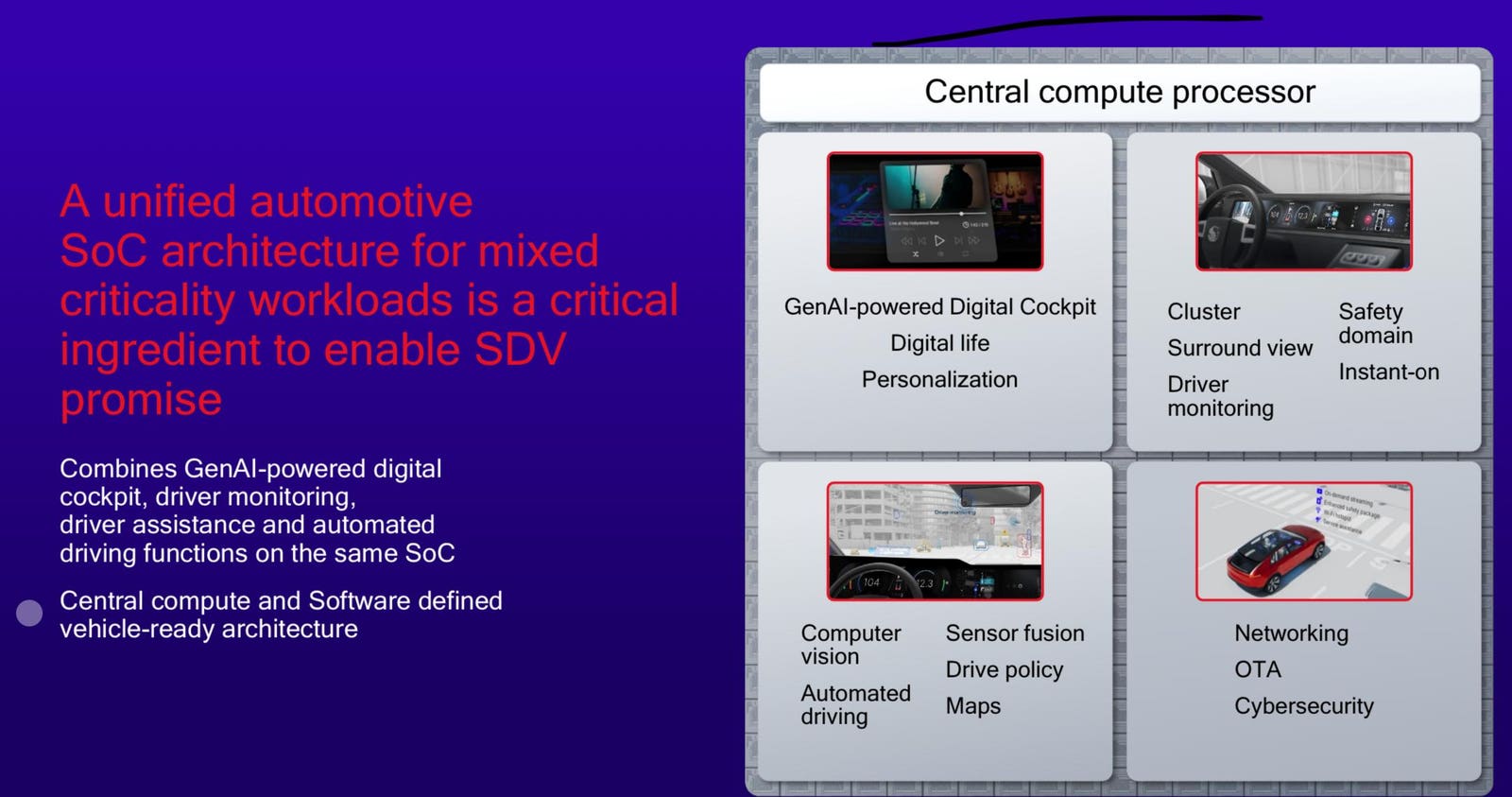
Qualcomm’s auto-related revenue jumped 87% year over year in the second quarter this year, well ahead of rivals Nvidia and Mobileye. Qualcomm estimated its automotive pipeline to be $45B earlier this year, double that of the previous year.
Qualcomm’s automotive efforts are critical to the company’s growth and diversification strategy. Automotive technology includes infotainment, advanced driver assistance systems (ADAS), and other systems that support the transition to software-defined vehicles. According to the company, almost every major automotive OEM is adopting Qualcomm’s Snapdragon platform and digital chassis strategy. To prove that point, Qualcomm is equipping over 115 vehicle models that were launched in FY24. Two significant wins announced last year were for Mercedes Benz and BMW for infotainment applications.
I recently spoke with Laxmi Rayapudi, Qualcomm’s Vice President of Product Management, to learn what Qualcomm is doing to meet the needs of major automotive companies. Automotive silicon is a huge opportunity: QTI estimates it to be a $100B market by 2030. Qualcomm’s focus on edge AI and on-device inference processing positions the company well to succeed in the exploding automotive segment.
“The integration of AI in the automotive sector is revolutionizing how we drive, enhancing safety, efficiency, and the overall driving experience,” said Laxmi. “Qualcomm’s groundbreaking advancements in AI technology (on edge) are at the forefront of this transformation, enabling vehicles to become smarter, more connected, and capable of making context-aware real-time decisions that improve both performance and safety on the road.”
Leveraging the Snapdragon SOC designed for low-power AI, Qualcomm has created a leadership position as its competitors struggle to deliver the computational horsepower needed for ADAS and the required graphics-intensive work for cockpit infotainment. Qualcomm refers to its SoC as the first integrated automotive super-compute class System-on-Chip, the Snapdragon Ride Flex SoC.
Qualcomm’s Digital Chassis offers a more complete, one-stop-shop approach to integrating multiple automotive technologies under a single platform. This includes ADAS, infotainment, telematics, connectivity, and car-to-cloud services, providing automakers with a comprehensive modular platform. Qualcomm’s connectivity solutions surpass competitors, including 5G, LTE, Wi-Fi, and Bluetooth integration.
Qualcomm is also very flexible. Auto OEMs can select which workloads to run on the Snapdragon. For example, they could use Nvidia for ADAS and Qualcomm for Infotainment and connectivity.
Qualcomm sees the future as being powered by a centralized compute facility, aggregating domain-specific functions to reduce latencies and lower costs.
Qualcomm believes that today’s Domain-controller centric architecture will evolve to become more … [+]
Qualcomm
Conclusions
Qualcomm’s automotive revenue in the most recent quarter was $811 million, an 87% increase from the same quarter in 2023. AI at the edge is certainly alive and well for the company, far outstripping Nvidia’s automotive business. Many analysts believe that the automotive market could reach over $100B by 2030, so this is not an insignificant market by any stretch, and Qualcomm seems to have the right mix of compute, graphics and communication technologies the market is looking for.
I’m hoping to learn more about Qualcomm’s Auto strategy and roadmap at the upcoming Snapdragon Summit event which takes place later this month. Stay tuned!
